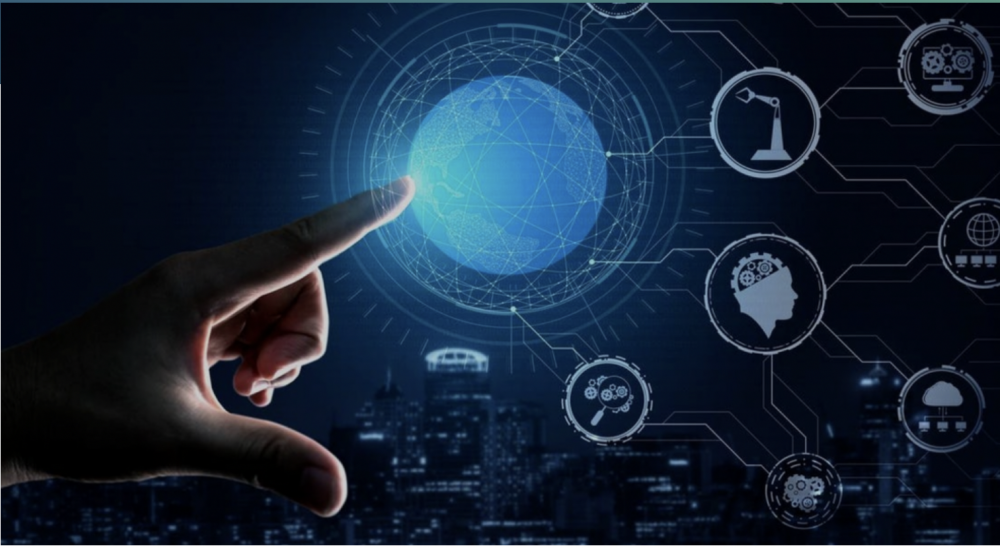By analyzing the current situation of industrial companies in Europe, to a greater or lesser extent, we can see that they are following the path of digitization and implementation of solutions related to Industry 4.0.
The spectrum of companies implementing these solutions is very diversified, ranging from companies starting their more typical industrial automation path using the concept of Industry 3.0, to other companies implementing solutions that are not very mature on the market, more typical of the R&D domain.
The digitization process is unique and customized to the needs of each organization. Nevertheless, a pattern can be observed in all cases, which may be related to the goals to be achieved and the focus of the transformations. We can observe that efforts aimed at automation, sensors and data capture, digitization and integration of information flows, real-time data visualization, digital twin, cyber-physical systems, advanced analytics, predictive models, simulations, optimization algorithms, and implementation of artificial intelligence remain in most cases focused primarily on the bottom line, i.e., cost reduction through operational efficiency improvements.
On the other hand, another primary focus of Industry 4.0, still less explored by most traditional industrial companies, is the focus on the ‘top line’ or sales, in this case, through the evolution of the business model based on the opportunities resulting from new technologies and the transformation process of Industry 4.0.
Start-ups and ‘digital native’ companies are changing the rules of the game in the way they generate revenue and deliver customer value by focusing on using new technologies and exploiting data as a company asset.
Trends that drive change
Focusing on the industrial scope, we can conclude that several business models are being developed based on the use of new technologies. The difference between these new business models lies mainly in the trend that drove this change. We can distinguish 4 main drivers: the target customers, the value proposition, the value chain, and how we capture value.
Let’s talk about four significant trends: integration, ‘servitization’ or service offering, selling knowledge or expertise and selling digital products with IT services.
Integration
The first trend driving change in the industrial business model, integration, has the transformation of the value chain as its main driver. One example is the integration of customers into the design process, intending to transition from mass production to mass customization.
Customers can customize their product on a large scale (a professional in-house designer usually executes the main design) and thus generate a customized production on demand. This type of business model is only viable when we can produce in very small or individual batches and have very short production and supply lead times which implies making significant changes in the supply chain, among other things, moving from large, centralized factories in countries with low production costs to distributed production in small flexible factories closer to the end consumer.
To this end, significant changes in the value chain are necessary and possible thanks to new technologies such as an e-commerce platform with product customization and design for the customer, computer-aided production, and design tools to reduce the time and workload of transforming a customized order into production orders and production instructions, flexible process automation, additive manufacturing and of course the integration and digitalization of the information flows. Atomic Skis, Adidas, and New Balance trainers are some examples of this.
“Servitization”
The second trend in the business model is “servitization” or service offering, where the key drivers are the value proposition and how we capture the value. In this area, we can find different examples, including the offer of maintenance services derived from product monitoring and data mining. This is possible thanks to the development of products with IoT sensors that allow the manufacturer to analyze the data, exploit it with data analysis algorithms, and offer complementary predictive maintenance services, generating a sustained revenue basis throughout the product’s life.
A more extreme variant of the above is ‘product-as-a-service’ selling. The manufacturer sells a package of services that guarantees the product’s availability while charging per result, e.g., hours of use. Examples of this model can be found at ABB Marine Systems (producer of power and automation systems for ships), Rolls-Royce (aircraft engine manufacturer), or Daimler Mobility Services (mobility services of the car manufacturer Daimler).
Sale of knowledge
The third trend addressed is the sale of knowledge or expertise. This is when the company sells consulting services associated with understanding its product and process. For example, companies that are very advanced in their production systems and digital transformation are starting to offer consulting services in this area to other companies. In this regard, we can find examples such as GE Digital with digital transformation consulting services derived from its in-house expertise at General Electric.
The fourth and last trend that is influencing the business models is the selling of digital products and IT services. This is when a company develops a digital solution for its factories and then sells the software and associated IT services to other companies. An example of this is General Electric’s offering of digital products through its GE Digital business that was initially developed for its factories, for instance, the Predix maintenance platform, among many other systems.
Discover Digital Transformation
Find out more about improving this business area
